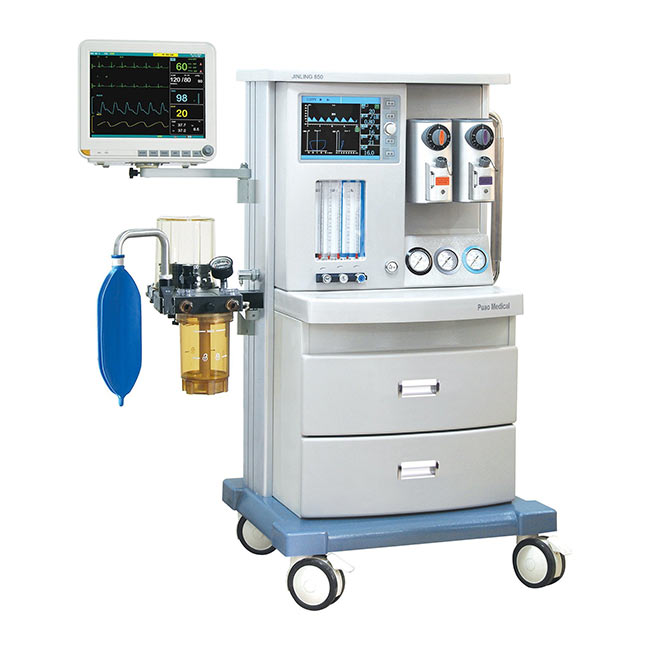
An artificial breathing device or a ventilator (in English: medical ventilator) is a device that performs breathing work for patients who have temporary or permanent breathing problems. In other words, it blows into the lungs and lingers, and exhalation is done spontaneously. Artificial ventilation is started with tracheal intubation. After that, artificial respiration begins for the patient using advanced devices that are controlled by microprocessors today.
The history of artificial respiration goes back to about 870 years before Christ. In 1530, the Swiss Paracelsus, by using a blacksmith tail and putting it in the patient’s mouth and blowing it, brought air to the lungs. American Forrest Bird invented the first modern artificial respiration device called Bird Mark 7 during World War II.
In Iran, the use of various ventilator devices has a history of more than 50 years. Today, the most advanced model of these devices is used in Iranian hospitals.
Various types of ventilators are available today. The choice of ventilator depends on the severity of the disease process, the duration of ventilatory support, the patient’s level of consciousness, hospital facilities, etc. Therefore, artificial ventilation machines are classified into two types:
The first artificial ventilation machines were designed and used during the polio epidemic. These ventilators are in the form of a chamber that covers all around the chest or body (except the head and neck). During exhalation, the air inside the chamber is evacuated, leading to the creation of negative pressure inside the chamber, after which it causes the chest wall to stretch out and expand it.
Advantages
Not needing an artificial airway and subsequent events.
Improving oxygenation in patients with voluntary breathing with reduced breathing quality and efficiency, such as chronic obstructive pulmonary disease.
Reducing the need to use muscle relaxants.
Reducing the work of breathing in intermittent therapy to support ventilation so that the ventilatory muscles can rest.
Disadvantages
It is difficult to sterilize and maintain sanitary standards with it.
It reduces the mobility of the patient and causes complications due to immobility.
The negative pressure created under the chamber causes complications on other systems (devices) of the body.
It is difficult to provide nursing care to a patient under a ventilator.
It cannot be used in any type of respiratory failure.
Its vest type can cause pressure sores.
During exhalation, positive pressure ventilators flow gas into the lungs at a pressure greater than atmospheric pressure, creating a positive alveolar pressure and causing the chest to expand. In this type of ventilation, it is necessary to install an artificial airway or a tracheal tube or a cuffed tracheostomy so that the air flow with the desired volume can enter the lungs with positive pressure during exhalation. These types of ventilators have four main phases that must be completed to provide a ventilation cycle for the patient:
inhale
Change inhale to exhale
exhalation
Change from exhalation to inhalation
Types of positive pressure ventilators
Constant pressure ventilators
Fixed volume ventilators
Fixed time ventilators
High frequency ventilators
Constant pressure ventilators
These ventilators end the constant flow volume when the patient’s airway pressure reaches the preset limit; Therefore, by setting higher pressure values on the device, more volume can be delivered to the lungs. The patient’s airway pressure in this type of ventilation is constant (equal to the set pressure on the device) and the volume is variable.
In these ventilators, the tail phase or gas flow into the lungs ends when the pre-set volume on the device is included in the lungs. The ventilator will continue to deliver the volume until it reaches the set volume, which is one of the obvious advantages of these modes, because before other modes, it has the ability to control ventilation and oxygenation and deliver the preset volume (with different pressures) to the patient’s lungs, and this advantage The reason for the widespread use of these ventilators is to control patients with acute ventilation disorders. One of the disadvantages of this ventilator is that it may raise the airway pressure to dangerous levels and expose the patient to the risk of barotrauma. In today’s ventilators, if the device and alarms are properly set, such a problem does not occur, therefore, setting the alarms and values is very important.
Due to being under the control of time, the flow rate should be adjusted in such a way that the desired current volume enters the lungs at that time. These ventilators are especially used in the ventilation of children and babies.
Flow volume = flow rate x time
They are among the new ventilators that can provide small flow volumes (5-1 ml/kg or around 50-100 ml/kg) with high frequency (from 150 cycles per minute or 20 revolutions per second) to the patient’s lungs.
Source: Wikipedia
